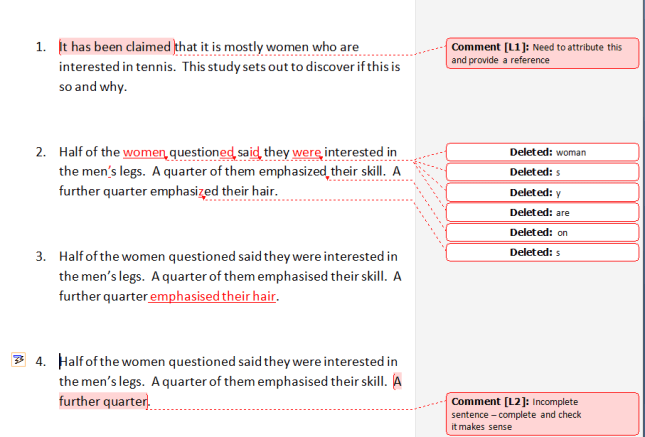We tend to think of plagiarism as “copying” – picking up chunks of text out of a book (then) or good old Wikipedia (now) and putting it in our essays and claiming it’s all written by us.
But plagiarism is really “passing other people’s work off as our own”, and this includes a lot of other things as well as copying out of books.
I’m going to talk about some examples and also about how I work with students to make sure I retain their authorship while helping them with any problems they might have with their writing.
Plagiarism includes:
- Not citing your sources. In example 1, below, the author has claimed something but not said where they got it from. All sources need to be cited and you can have a look at my article on referencing to see how to do that.
- Copying. You need to either put other people’s words into your own words, or quote them directly (within the text for short quotations, as an inset block of text for longer ones) and then reference them.
- Having another person write your work for you. Very occasionally I get asked to rewrite an essay. A lot of companies prey on students’ academic worries and fears and try to sell them essays. If you buy and use someone else’s work like this, you are plagiarising and lying. Any qualification you gain from this has not been gained legitimately or legally.
So, when I work with an essay, dissertation or thesis, I am very careful not to rewrite anything but only to tweak grammar, punctuation and spelling and suggest where things should be sorted out. The following image shows a few examples of how I work, and one of how I DON’T work.
In Example 1, the author has not quoted their source and I’ve inserted a comment to remind them to do so.
In Example 2, there’s quite a lot wrong with spelling and grammar, but you can see that the author knows what they’re talking about. I’ve amended their mistakes, but again that’s all tracked, so they a) can see what they’ve done wrong and b) have to choose whether to accept the change themselves. By the way, the ‘s’ is changed in emphasized to make it consistent. I’ll do a post about s and z another time.
In Example 3, a Very Bad ProofReader has seen something missing and decided to add it in. In this case, rather than a few missing words, it’s a concept or part of the explanation of the actual results that’s missing. This is a small example – but the author has not written that and the proofreader shouldn’t have. I’ll suggest adding a word or two, but I wouldn’t complete something missing from the actual substance of the research or discussion.
Example 4 shows how I’d handle that same sentence. No re-writing, no suggesting – I’ve just highlighted and told them something’s missing. I’ll do the same if a sentence is mangled, incoherent and just doesn’t make sense. But I don’t write my clients’ words for them, and students shouldn’t expect their proofreaders to do so (most don’t!).


Jane
June 29, 2011 at 8:56 am
You’re much more tactful than me. In example one I would just have snarled “By whom?” And would probably never get any work from that person ever again.
How do you feel about footnotes? I have noticed a trend in non fiction now to put all references at the end of the book, and not necessarily to tie them in with the text to which they refer.
LikeLike
Liz at Libro
June 29, 2011 at 9:00 am
Thanks for your comment, Jane. I do need to be tactful as I rely on those recommendations, and most of my clients are lovely, which helps. I know some editors write a list of snarks on a separate bit of paper / document, but I think all the years of training people has made me able to be calm and pleasant when I need to be!
I did a post on footnotes – sometimes the style is dictated by the referencing system. I’m not keen on the unnumbered ones which sit in blocks at the end of the book, but if that’s what the author or publisher really wanted, I’d go along with it – though I might comment once.
LikeLike
Jane
June 29, 2011 at 11:36 am
I like the idea of a list of snarks on a separate bit of paper. I used to train people too, and occasionally had to go outside for a few moments to do some deep breathing so that I didn’t start chewing the carpet.
LikeLike
Liz at Libro
June 29, 2011 at 12:03 pm
Oh yes – pop to the loo, grind your teeth a bit, out again, calm as anything!
LikeLike
Jane
June 30, 2011 at 10:54 am
Yep, that’s it exactly.
LikeLike